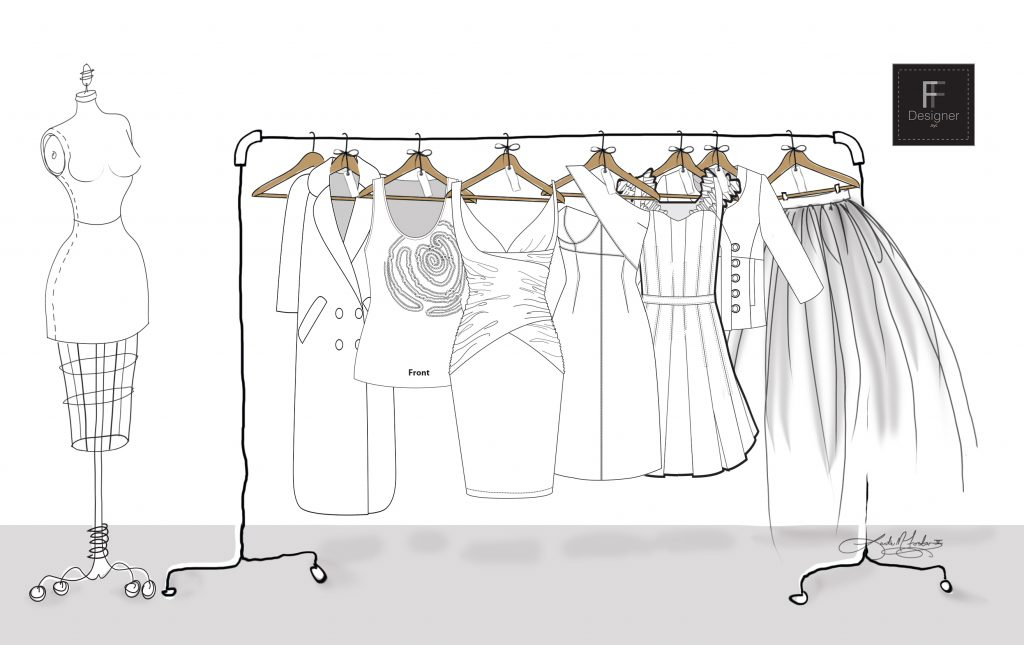Clothing Co-design and Consumer Attitude
When consumers make design decisions to customize their clothing to fit their body and taste, their involvement in the process goes beyond purchasing RTW clothing. This section reviews key areas in academic literature that influence and/or impact consumers’ attitude towards co-designed clothing. These areas include their attitude towards co-designing, the personal impact of wearing such clothing, and their apparel co-design priorities. Attitude As a relatively new concept, literature on consumer attitudes toward co-designing clothing retail and/or online is limited. Various studies show that consumers, even though some are unaware of it, are interested in the concept of apparel co-design online. Although there is an interest in apparel MC and co-design, Kaplan, Schoder & Haenlein argue that the value is in the end product itself. This can vary, as not all apparel companies are able to provide 100% apparel customization, due to the wide variety and levels of product customization. Such variety includes custom silhouette, size, colour, material and graphics (print).Other important aspects that influence consumer attitudes towards online apparel co-design are their computer skills, and confidence in their own design ability. In the US, Kamali, & Loker tested the use of an online co-design tool kit, for customizing a t-shirt, with university students. Their findings showed that computer savvy students enjoyed the co- designing experience, because they found it convenient and fun. Also in the US, Ulrich et al.examined the attitudes of female college students towards co-designing three-piece career outfits. Her findings show that, students who are confident in decision-making find the co-design process easy, and are satisfied with their creations; those who are less confident usually required assistance.Consumer shopping behaviour plays a key factor in the uptake of apparel MC. This was supported by a study by Ou,on Chinese university students in the US. His findings show that hedonic consumer participants, who shop for pleasure and lead or follow fashion were interested in apparel MC. However, those who were identified as utilitarian and were considered as followers, were neither interested in clothing nor with apparel MC.Another study on fashion leaders and followers show that both are highly interested in apparel co-design options. Both studies agree with the interest of fashion leaders and followers in apparel MC, however unlike Ou, Cho & Workman did not consider examining them by shopping behaviour(hedonic/utilitarian).Adult females in the US showed interest in apparel MC only when they perceived the provider’s website as useful and competent; they also valued the website’s co-design competency more positively than its simplicity, and ease of operation. In addition, they were concerned with the security of their personal information on the website. By comparison, adult consumers in Sweden expressed a positive co-designing experience at retail, after receiving sales help in body measurement and co-designing knitted garments before purchase. They were impressed with the service and described it as a “great experience”. Clothing and Personal Impact Several studies discussed the relation between self, self-presentation and the use of clothing in managing one’s appearance in society. Sontag states that a "Psychological comfort can be derived from a sense of being dressed in a manner congruent with, or expressive of, one's self-concept". Similarly, Stone argues that clothing is related to one’s self-concept and self esteem; it communicates one’s mood and values to its audience, and the audience’s perception of it has an impact on its wearer’s feelings of self worth. In addition, Smathers & Horridge made a positive relation between clothing, good fit and the wellbeing of its wearer as they state, “Good fit of clothing is vital to an individual’s psychological and social well-being”.In the context of apparel MC, literature appears to lack studies that examine the impact of how one feels when wearing a piece of co-designed clothing. The closest to this in literature was found in a study conducted in Germany where university students took part in co-designing a t-shirt. The findings show them expressing feelings of “pride” in taking part in creating the end product. The reason for this was attributed to the feeling that product characteristics closely matching the participants’ personal preferences. Studies that provide a designer’s perspective on this topic were also limited. For example, a graduate student of apparel design in Finland conducted a study where she co-designed a mass customized fashion collection with the help of four young women. As a result, and to accommodate the mass customization concept, she learned to design an apparel fashion collection based on the concept of modularity. Her findings showed a high level of participant satisfaction, which led her to change her attitude towards apparel design. On this, She writes:At first I wanted to present a ready collection only after my own design ideas, which can be later customized by the consumer in colour, fabric, and size. But, after I got more and more information about this subject, my personal goal became to figure out how much power I could give the potential consumer in the design process, without losing too much of my freedom of creativity . The above studies highlight a positive relation between well-fitted clothing and the wellbeing of its wearer. In addition, they signal the possibility for a shift in designers’ attitudes, from holding on, to letting go of a certain level of ‘control’ over the creative process. Prioritization Consumers’ attitudes towards apparel customization priorities provide insights into their motivation to engage in apparel MC co-design activity. In addition, it further informs apparel designers and marketers of consumers needs and wants in this realm. The following reviews literature on prioritization divided into three areas: clothing details, clothing types, and clothing categories. a)Clothing Details In this study clothing details refer to the level of customization of aspects such as size, silhouette, fabric, colour, and graphic (print). Results have shown that the consumers’ intention to buy custom clothing rises according to its customization level(s) . However, to date few studies have considered investigating the consumers’ priority per level. In the US, during the early days of apparel MC, female focus groups identified 4 ways they wished apparel customization could be offered: clone pre-owned clothing; 100% customization or bespoke; a co-design tool (tool kit); and standard sizes with customizable design options. Subsequent studies that examined a prioritization approach showed that the top priority for female college/university students was to customize the fit/size of clothing, however their findings of subsequent priorities differed.For one study, the second priority was customizing ‘material’ for Jeans ; while for another it was customizing the ‘colour’ for t-shirts. Although these findings indicated consumer priorities for custom clothing details, they focus mainly on female college/university students in the US, and did not examine male priorities, nor did they correlate their results with consumer life style. They also neglected to include data on Canadian consumers. b)Clothing Type Clothing Type in this study refers to garment type such as suit, dress, skirt and pants. The literature focused on this aspect of apparel customization is limited. In the US, one study found the customization priority of clothing type among female university students to be first t-shirts, second bottoms, and third tops. The above provides consumer priorities within custom clothing type, but leaves a gap in providing more specification about them, and has focused primarily on female college/university students in the US. c)Clothing Category Clothing category in this study refers to the function / activity for which the clothing would be worn, such as business, casual, evening, leisure, artistic performance, among others. However, literature that discusses this aspect of apparel customization is limited. The available data has focused primarily on cultural differences related to custom clothing. For example, in Saudi Arabia female college students were interested in customizing evening wear; while in the US their counter parts were interested in customizing Jeans.The above information provides limited data on consumer priorities in the custom clothing category. Similar to the previous section on clothing details and type described above, the research focused on female college/university students. |

